1.
Introduction and preliminaries
Consider the linear hybrid time-delay system
where x(t)∈Rn, the matrices A,B and C are in Rn×n, and τ≥0 and h≥0 are constant delays. Systems of this nature are extensively employed in modeling dynamical systems in economics and population dynamics, as well as in the study of deformable solids with memory, and wave processes in extended electrical circuits [1,2].
A system is said to be positive if for any nonnegative initial condition, the solutions x(t) of the system remain nonnegative for all t≥0.
Throughout this paper, we will be dealing with real square matrices. In addition, for a symmetric matrix A∈Rn×n, we shall write A≺0 (A⪯0, resp.) if A is negative definite (semidefinite, resp.).
Let A=[aij]ni,j=1 be a real n×n matrix. Then, A is defined as follows:
● Metzler matrix: if aij≥0 for all i≠j, where i,j=1,…,n.
● Nonnegative matrix: if aij≥0 for all i,j=1,…,n.
● Hurwitz matrix: if all its eigenvalues have negative real parts.
For further details on such matrices, refer to [3].
The following result, known as the Lyapunov theorem, provides a necessary and sufficient condition for a matrix to be Hurwitz.
Lemma 1.1. [4] Let A∈Rn×n. Then, A is Hurwitz if and only if there exists a positive definite matrix P∈Rn×n such that
The matrix inequality (1.2) is commonly referred to as the Lyapunov inequality. In the case where P is a positive diagonal matrix satisfying the above Lyapunov inequality, A is called a Lyapunov diagonally stable matrix. It follows from the definition of Hurwitz matrices that a Lyapunov diagonally stable matrix is Hurwitz. For those interested in gaining a deeper understanding and broader context of this topic from the perspective of matrix theory, we direct the reader to [3,4,5,6]. These references offer an in-depth and thorough exploration of the subject, covering essential aspects and methodologies integral to the field. They provide valuable insights and a comprehensive overview that enrich and support the discussion presented in our work.
Lyapunov diagonal stability has been applied in various fields, such as population dynamics [7,8], communication networks [9], and systems theory [3]. Given its significance, it has been extensively studied in the literature [10,11,12,13,14,15].
This notion of matrix stability has been expanded to include simultaneous Lyapunov diagonal stability. This involves the existence of a positive diagonal matrix D that satisfies the Lyapunov inequality for a family of matrices A={Ai}ri=1, where Ai∈Rn×n for i=1,…,r. This form of stability is referred to as common Lyapunov diagonal stability. There is more than one approach used in the literature to characterize this type of stability. In [16], a theorem of alternatives for linear maps over inner product spaces is presented. Another approach, developed in [17], utilizes the notion of P-matrices and Hadamard products. In [18], the Khatri-Rao products are used to derive further characterizations. For more recent developments in this area, see [16,17,18,19,20,21,22].
Returning to the system (1.1), let us quote a few results. The first one provides a characterization of system (1.1) assuming it is a positive system. Meanwhile, the second result offers a necessary and sufficient condition for the asymptotic stability of the system under the same assumption.
Lemma 1.2. [23] The system given in (1.1) is positive if and only if A is Metzler; meanwhile, B and C are nonnegative.
Lemma 1.3. [24] If (1.1) is a positive system, then it is asymptotically stable if and only if
is a Hurwitz matrix.
According to [25], when employing the direct Lyapunov method for the stability analysis of the system (1.1), a Lyapunov-Krasovskii functional can be determined and expressed in the following form:
where P, Q, and R are positive definite matrices.
The time-delayed system in (1.1) is said to be as diagonally stable if a Lyapunov-Krasovskii functional, as described in (1.3), exists with positive diagonal matrices P, Q, and R that meet the criteria of the Krasovskii theorem on asymptotic stability [26].
Theorem 1.1. [27] If system (1.1) is positive, then it is asymptotically stable if and only if it is diagonally stable.
As it has been shown in [27], a positive system in the form of (1.1) is diagonally stable if and only if there exist a triple of positive diagonal matrices P, Q, and R satisfying the following linear matrix inequality:
The main focus of the work of this paper is deriving a characterization for the existence of a diagonal solution for the above inequality in the case that A is a Metzler matrix with B and C being nonnegative matrices. Without loss of generality, we assume h=1. In other words, we investigate the existence of positive diagonal solution for the inequality in the form
An immediate observation here is that when B=C=0, this last inequality reduces to the Lyapunov inequality. Meanwhile, if only C=0, it becomes the Riccati inequality; see [28] for further details.
In a Euclidean vector space over R, nonempty disjoint convex sets can be separated by a hyperplane. The hyperplane separation theorem, which appears in various forms in the literature (see [29]) is particularly relevant when one of the convex sets is a cone, as highlighted in the following lemma. This version, which we will refer to as the Separation Theorem, is an important result for this paper.
Lemma 1.4. [30] Let U and V be nonempty convex subsets in a Euclidean space E (over R) with an inner product ⟨⋅,⋅⟩. In addition, suppose that V is a cone and the intersection of U and V is empty. Then, there exists a nonzero vector u in E such that
It is well-known that the cone of positive semidefinite matrices in Rn×n is self-dual. The next lemma demonstrates this.
Lemma 1.5. [29] Let W denote the space of all n×n symmetric matrices equipped with the inner product ⟨X,Y⟩=tr(XY) for all X,Y∈W. Then, the cone of positive semidefinite matrices S in W is self-dual. That is, if H∈W satisfies
then H∈S.
2.
Main results
We start this section with some technical lemmas which are going to be necessary for us to develop the main results of this paper.
Lemma 2.1. [19] Suppose A∈Rn×n is a Metzler matrix and B∈Rn×n is a nonnegative matrix. If the matrix C=A+B is Hurwitz, then there exists a positive diagonal matrix D∈Rn×n such that the following inequalities hold:
and
Lemma 2.2. [28] Suppose A∈Rn×n is a Metzler matrix and H∈Rn×n is a positive semidefinite matrix. Furthermore, let u∈Rn be a nonnegative vector such that ui=√hii for i=1,…,n. Then, the following inequality holds:
Using the Schur complement, we can derive the following result, which provides an alternative method for finding the solution to (1.1). For more detailed discussions on the Schur complement and its applications, see, for example, [31].
Lemma 2.3. Let A,B,C∈Rn×n. There exist positive definite matrices P,Q, and R in Rn×n satisfying the inequality
if and only if
Proof. It follows directly from the Schur complement that inequality (2.1) is true if and only if the following is satisfied:
(ⅰ) [−Q00−R]≺0, and
(ⅱ) ATP+PA+Q+R−[PBPC][−Q00−R]−1[BTPCTP]≺0.
Since Q and R are positive definite matrices, then (i) is always true. Meanwhile, (ii) is equivalent to
Theorem 2.1. Let A,B,C∈Rn×n such that A is a Metzler matrix, while B and C are nonnegative matrices. If there is a positive diagonal matrix D and any positive definite matrices Q and R satisfying the inequality (1.4), then the matrix A+B+C is Lyapunov diagonally stable.
Proof. Suppose that D∈Rn×n is a positive diagonal matrix and Q,R∈Rn×n are positive definite matrices satisfying the inequality in (1.4). Thus, for any nonzero vector u∈Rn, construct a vector v∈R3n to be such that v=[uuu]. Clearly, v is nonzero since u is nonzero. Therefore, it follows that
This means that uT(ATD+DA+BTD+DB+CTD+DC)u<0, i.e.,
This implies that the matrix A+B+C is Lyapunov diagonally stable.
We are now ready to present our main result, the proof of which follows the approach outlined in Theorem 3.1 from [28].
Theorem 2.2. Let A,B,C∈Rn×n such that A is a Metzler matrix, while B and C are nonnegative matrices. Then, there is a positive diagonal matrix D and positive definite matrices Q and R satisfying the inequality (1.4) if and only if the matrix A+B+C is Hurwitz.
Proof. Necessity: It is immediate from Theorem 2.1 and the Laypunov theorem.
Sufficiency: Suppose that A+B+C is a Hurwitz matrix. Observe that since both B and C are both nonnegative, then B+C is also a nonnegative matrix. Hence, since A is Metzler, by Lemma 2.1, there is a positive diagonal matrix D∈Rn×n satisfying the following inequality:
Select a matrix D satisfying (2.2). Therefore, to finish this direction, we need to show that there is a pair of positive definite matrices B and C in Rn×n such that
We shall proceed with a contrapositive argument. First, suppose that there are no positive definite matrices Q and R in Rn×n satisfying (2.3). Next, consider the space E consisting of all 3n×3n real symmetric matrices, with an inner product defined by
where F,G∈E. Furthermore, consider the following sets:
and
Since there are no positive definite matrices satisfying (2.3), we must have U∩V=∅. Furthermore, it is clear that U and V represent nonempty convex cones within the vector space E. Based on these observations, the separation theorem, specifically Lemma 1.4, is applicable in this context. Consequently, there exists a nonzero matrix H∈E such that
According to Lemma 1.5, inequality (2.7) indicates that H⪰0. Next, partition H into a 3 by 3 block matrix as follows:
where each Hij∈Rn×n. Consequently, from inequality (2.6), we have
for all Q≻0 and R≻0 in Rn×n. By expanding the matrix multiplication in this last trace and recalling that the trace is the sum of the diagonal entries, we obtain the following expression:
for all Q≻0 and R≻0. Reordering this last inequality, we conclude that for all Q≻0 and R≻0, we have
For any given positive definite matrix Q, if tr(Q(H22−H11))>0, this leads to a contradiction with (2.8). To demonstrate this, let us consider the positive definite matrix tQ, where t>0 is a sufficiently large scalar. This substitution will reverse the inequality in (2.8). Therefore, we conclude that
for all positive definite matrices Q. Using a similar argument, it can be shown that for all positive definite matrices R,
Now, the following trace:
must be negative. Otherwise, we will obtain a contradiction to (2.8). To see that, let t>0 be sufficiently small scalar. Then, consider the positive definite matrices tQ and tR and substitute them in inequality (2.8). Doing this would result in the following:
This is clearly contradicts that (2.8) holds for all positive definite matrices Q and R. Therefore, we must have
Now, recall that the matrix H is partitioned into 3 by 3 block matrices with each block in Rn×n. Let us construct a vector u∈R3n as the following: u=[xyz], where xj=√(H11)jj, yj=√(H22)jj, and zj=√(H33)jj. This means that x2j is the jth diagonal component of H11, y2j is the jth diagonal component of H22, and z2j is the jth diagonal component of H33, j=1,…,n.
According to Lemma 1.5, inequality (2.9) implies that H22−H11⪯0 and inequality (2.10) implies that H33−H11⪯0. This is equivalent to H11−H22⪰0 and H11−H33⪰0, i.e., xj−yj≥0 and xj−zj≥0 for j=1,…,n. Since H22⪰0 and H33⪰0, we must have yj≥0 and zj≥0. Therefore, for j=1,…,n, xj≥yj≥0 and xj≥zj≥0. Also, observe that x is a nonzero vector; otherwise y=0 and z=0, meaning that H is a zero matrix and this leads to a contradiction.
Additionally, note that we have
Recall that H is a positive semidefinite matrix. On the other hand, it is not difficult to see that the matrix
is Metzler. Thus, by Lemma 2.2 it follows that
From (2.11), we obtain that
which is the same as the following trace:
This is identical to
We note that B, C, and D all contain nonnegative entries. Additionally, for each j, we have xj≥yj and xj≥zj. Thus, we conclude that
and
By this and (2.16), we can see that
i.e.,
This last inequality suggests that
This contradicts that D satisfies the inequality in (2.2). This means that there is Q≻0 and R≻0 in Rn×n satisfying (2.3). This completes the proof.
We note that when C=0, Theorem 2.2 coincides with Theorem 3.1 in [28].
3.
Conclusions
In this paper, we have derived a characterization for the existence of diagonal solutions for a class of a linear matrix inequality. We considered systems where the matrices involved are Metzler and nonnegative, and we established conditions for the asymptotic stability of these systems. Using the separation theorems, we proved that if there exist positive diagonal matrices satisfying certain inequalities, then the system matrices are Hurwitz. Our findings extend the current understanding of Lyapunov diagonal stability and provide practical criteria for ensuring the stability of positive time-delay systems.
Our work broadens the scope of Lyapunov diagonal stability by providing a more comprehensive set of conditions under which stability can be ensured. This advancement is particularly relevant for applications in economics, population dynamics, and engineering, where systems often exhibit time delays and require robustness under nonnegativity constraints.
Future work can explore the possibility of developing similar characterizations for arbitrary matrices A, B, and C, without the restrictive condition that A is Metzler and B and C are nonnegative matrices. Such a generalization could open up new avenues for analysis in systems where these conditions do not hold. Additionally, another promising direction for future research is the development of further characterizations that parallel the results for Lyapunov diagonal stability, as seen in the works of [10] and [15]. These explorations could provide deeper insights into the stability of complex dynamical systems and enhance our understanding of the interplay between these inequalities and broader stability criteria.
Acknowledgments
We also would like to express our sincere gratitude to the anonymous reviewers for their valuable and constructive feedback, which greatly enhanced the quality of this paper.
The researchers would like to thank the Deanship of Graduate Studies and Scientific Research at Qassim University for financial support (QU-APC-2024-9/1).
Conflict of interest
The author does not have any conflict of interest.











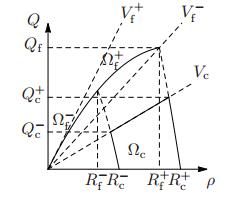

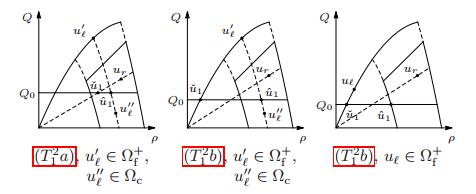




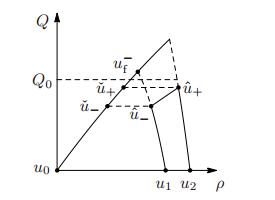

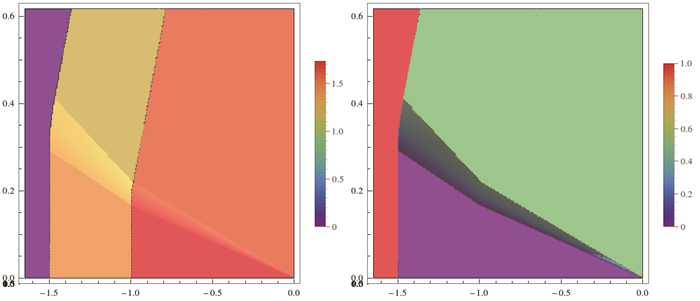
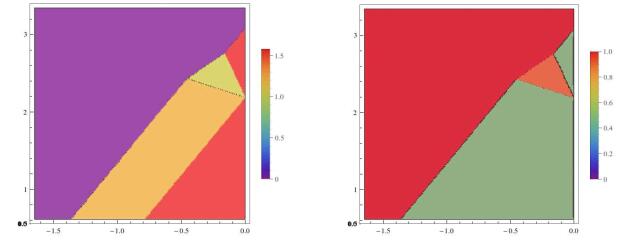

 DownLoad:
DownLoad: